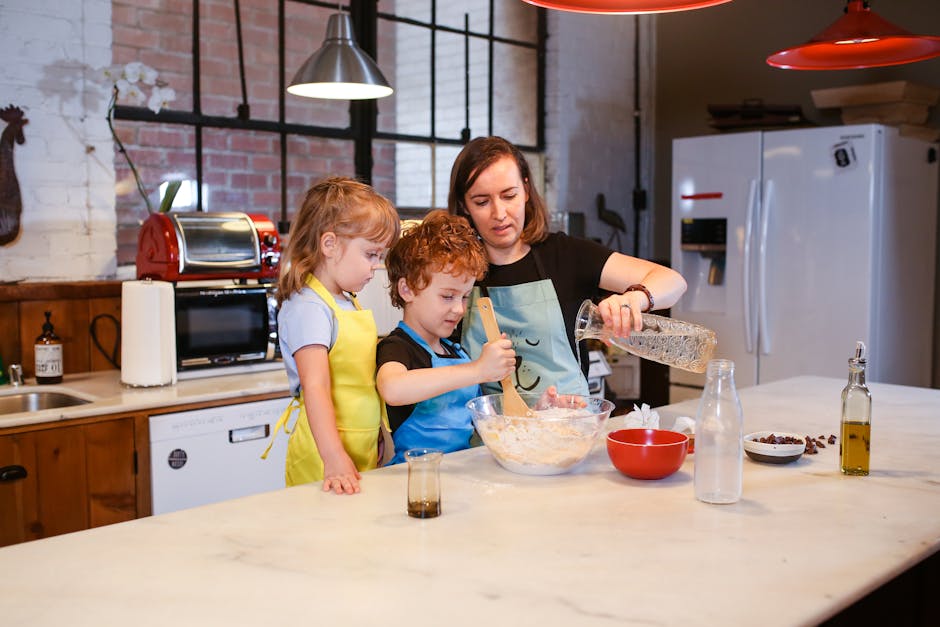The Complex Dynamics of Blended Families: A Two-Sided Story
Understanding the Benefits and Challenges of Blended Family Life
Blended families, often formed after remarriage or cohabitation, are increasingly common in today’s society. These families typically include children from previous relationships, creating a unique family structure that can be both fulfilling and challenging. The concept of blended families brings about a multitude of dynamics that need to be navigated carefully. Parents, stepparents, and children must often learn to adjust to new family roles and relationships. The intricate web of emotions, expectations, and responsibilities can either strengthen bonds or create friction within the family unit. In this article, we will explore the advantages and disadvantages of blended families, providing insights for those considering this family model.
The rise of blended families can be attributed to various societal changes, including rising divorce rates and the acceptance of non-traditional family structures. While these families can offer unique opportunities for growth and connection, they also come with inherent challenges that can impact relationships and mental well-being. Understanding the complexities involved in blended families is essential for successful integration and happiness among family members. In the forthcoming sections, we'll delve into the benefits that blended families might offer, as well as the potential downsides that individuals should consider when navigating this family landscape.
Pros
Blended families come with a host of advantages that can lead to enriched lives and familial bonds. As families merge, children gain new sibling relationships and parents can find companionship and support in each other. However, the benefits of blended families extend beyond just emotional support; they can also provide financial advantages, diverse parenting styles, and a wider support network. By understanding these advantages, families can focus on leveraging their unique strengths to create a loving and harmonious environment. Let's explore some of the specific benefits that blended families can enjoy.
Expanded Family Support System
One of the most significant advantages of blended families is the expansion of the support network. Blended families often bring multiple sets of adults into children's lives, resulting in more parental figures and role models. This extended network can offer emotional support, enhancing children's resilience during challenging times. Furthermore, the shared responsibilities between biological parents and stepparents can reduce stress and provide a multidimensional approach to parenting. Children can benefit from diverse perspectives and life experiences, ultimately fostering adaptability and social skills.
Teaching Empathy and Flexibility
Living in a blended family often means navigating complex emotions and differing perspectives. This dynamic can teach children empathy and understanding, as they learn to appreciate various family roles and relationships. The experience of interacting with step-siblings and navigating new family situations can help children develop essential social skills, such as cooperation and compromise. These lessons can have lasting impacts on their future relationships, both in personal and professional contexts, instilling values of respect and adaptability as they mature.
Financial Benefits and Shared Resources
Blended families may also enjoy financial advantages, as two households often combine resources. This can create a more economically stable environment, allowing for better access to education, activities, and opportunities. With shared expenses, parents can pool financial resources for larger purchases or investments, such as family vacations and educational savings plans. Additionally, some families benefit from reduced childcare costs due to the presence of additional adults willing to help care for the children, leading to improved financial stability and security.
Diverse Perspectives and Experiences
Blended families bring together individuals from different backgrounds and experiences, creating an environment rich in diverse perspectives. This fusion can enhance problem-solving abilities and foster creativity, as children and adults alike learn to appreciate various viewpoints. The exposure to different cultures, traditions, and values can enrich the family dynamic, making it easier for children to adapt to diverse social situations in the future.
Increased Social Skills and Adaptability
Children in blended families often develop superior social skills and adaptability. The necessity to adjust to new family dynamics, including step-siblings and differing parental styles, encourages children to enhance their communication skills and navigate complex social settings. This exposure can lead to greater emotional intelligence and an ability to relate to a wider range of people, which are crucial skills in today's interconnected world.
Role Modeling for Healthy Relationships
Blended families can serve as powerful role models for healthy relationships, showcasing the importance of cooperation, respect, and compromise. Children witnessing adults who can navigate challenges and build harmonious relationships without conflict learn valuable lessons about partnership and resilience. This modeling can instill a strong foundation for positive future relationships, offering kids insights into working through differences and valuing diversity in connections.
Missing a pro?
Let us know which pro you are missing!
Cons
While blended families present numerous advantages, they also face specific disadvantages that can impact the well-being of family members. Navigating the complexities of relationships in a blended family can be challenging, with issues such as divided loyalties, conflicts, and resistance to change often arising. Understanding these drawbacks is crucial for families to anticipate potential challenges and develop strategies for effective communication and conflict resolution. In the following sections, we will discuss some common obstacles faced by blended families.
Potential for Increased Stress and Conflict
The complexity of blended family dynamics can contribute to increased stress and conflict among family members. Different parenting styles, expectations, and communication methods can clash, leading to frustration and misunderstandings. Moreover, navigating the logistics of visitation schedules, holidays, and family events can be confusing and stressful for everyone involved. The emotional strain of managing these conflicts can take a toll on individual mental health, making it crucial for blended families to develop effective conflict resolution strategies and prioritize open dialogues to reduce tension.
Identity Confusion
In blended families, children may experience identity confusion as they navigate their roles within a complex family structure. They might struggle with feeling a part of multiple families or find it difficult to align their sense of self with different parental expectations. This confusion can lead to frustration and a sense of alienation, potentially impacting their emotional well-being and self-esteem during formative years.
Divided Loyalties and Conflicts
In blended families, children may feel torn between their biological parents and stepparents. This can lead to divided loyalties, where children struggle to balance relationships and obligations toward both sets of parents. Such emotional conflicts can create tension, making it challenging for families to function harmoniously. Parents and stepparents may inadvertently compete for the affection and loyalty of the child, leading to conflicts that can exacerbate feelings of isolation or rejection. Open communication and support are essential to mitigate these feelings and create a unified family front.
The Challenge of Forming Bonds
Building strong, trusting relationships in a blended family can be a slow and challenging process. Children may initially resist connecting with step-siblings or stepparents due to feelings of jealousy or loss over the original family structure. These emotions can hinder the formation of a cohesive family unit and lead to resistance in accepting new family members. Parents can find it difficult to foster unity while balancing the distinct relationships each child has with their biological and non-biological parents. Patience and consistent effort are necessary for nurturing these bonds and encouraging acceptance among family members.
Complicated Parenting Dynamics
Blended families often face complicated parenting dynamics that can lead to authority issues. Different parenting styles, rules, and disciplinary methods can create inconsistencies, leaving children unsure about what is expected of them. Navigating these complexities can not only strain relationships between parents and children but may also hinder the development of a unified family identity, making it harder for everyone to come together.
Lag in Family Unity Development
Establishing a sense of unity in a blended family can take time, and the initial phases may feel disjointed or awkward. Individuals might still hold onto past family traditions or emotions, which can interfere with the acceptance of new relationships. This lag in cohesion can lead to feelings of isolation or exclusion among family members, making it challenging for the family to bond and create shared experiences effectively.
Missing a con?
Let us know which con you are missing!
Conclusion
Blended families present a unique and complex dynamic that can offer both remarkable advantages and significant challenges. While the benefits such as expanded support systems, opportunities for empathy-building, and financial stability are appealing, the potential downsides like divided loyalties, bonding difficulties, and increased stress must not be overlooked. Awareness and understanding of these complexities can empower families to navigate their unique circumstances effectively. By fostering open communication, setting realistic expectations, and promoting harmonious interactions, blended families can cultivate an enriching environment that embraces both love and resilience.
What do you think?
Do you think the pros outweigh the cons?








